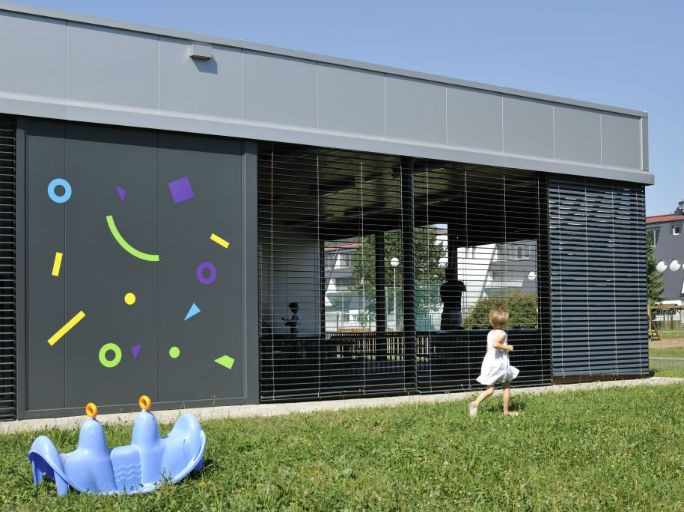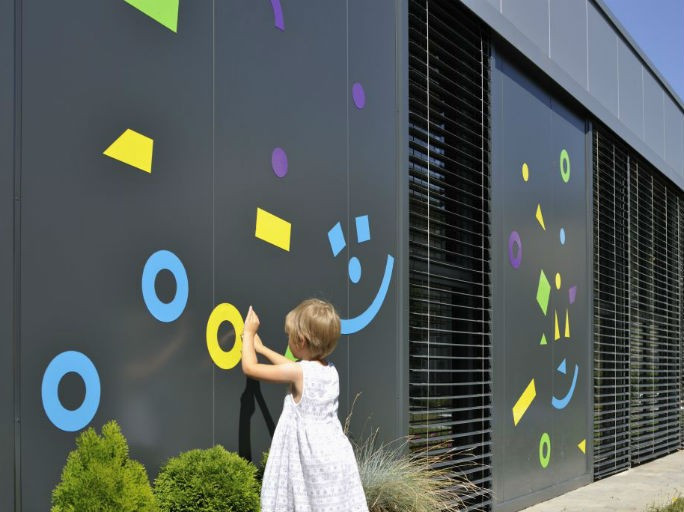Prefab modular units
With more people on the move in today's societies, we are increasingly looking for more flexibility and versatility in all lifestyles. Architecture is trying to answer the demands of the fast-paced life rhythms, together with high energy-efficiency and sustainability standards of today's consumers. The gap between cities and countryside is disappearing, as more people are choosing to telework and want to live close to nature. In this way, the modern architecture needs to respond to high demands of users as regards versatility, sustainability, and cost balance. With more spending power in various parts of the world, the need for mobility in also growing, characterized by the demands for more standardisation and regulation of various products and processes in the building industry.
From renovated mansions to urban gardens – trending in building design
Due to eclectic tendencies and various trends in building design it is not easy to pinpoint a single tendency that would be prevalent in the architectural styles of today. The common denominator is the fact that people are choosing comfort over cost, if possible, and follow their own needs. Uniformity is out and individualism is in. This means that today's consumers demand high quality buildings, and high standards of health and fire safety. What is more, natural materials are preferred and high-energy efficiency is expected, if possible, from renewable energy sources. On the other hand, today's consumer will always be guided by cost, unless we speak of high-end luxury construction. In general, we could say that tendencies are: individualist, natural and sustainable.


Some real-life examples of major architectural trends in the past year
Back to nature, could be one of the major mottos of the past decade. With more people moving to urban areas, the contacts with our original green surroundings are ever rarer. What is more, we have increasingly little time to spend in nature, and the distances to travel to get to the first spot of green from the cities are getting longer. This is compensated by including green spots and elements into our urban surroundings. Parks, green islands and playgrounds are included into urban design, while constructing urban gardens is becoming a growing trend in all parts of the world. A variant of the urban gardens is a green roof or a green side carpet, which is a welcome shade and isolation cover, as well as a great source of oxygen and calm effects on the mind.
Another trend in today's architecture and design is reuse and modularity, with people moving between countries more often, as well as between different parts of the world. While some communities are struggling to adapt to these changes, others have grasped the trend and are addressing it increasingly with using prefab modular units in building construction. These buildings are characterized by high-energy efficiency and modern design, while always following certain basic characteristics. They come in standard sizes, but are easy to assemble and dissemble, making it simple to move and rearrange. What is more, they come with in-built installation and sanitation appliances, always using high-quality prefab building materials. Natural tendencies and reusability are the norm in this industry, which is gaining in importance with the new changeability of the world.
Another, more extreme variant of the reusability in architecture is a recent trend in repurposing shipping containers. In recent years, this not-entirely-new idea has been given wings, and containers are being used for living units, but also for offices and even swimming pools. While this can be a welcome temporary solution, it is worth noting that high quality prefab modular units are much more suited for mid-to long-term living.
We could say that a continuation of this trend for more versatility and mobility is a tendency towards moving buildings. What is means is an increased use of motors, pulley and cranks in residential units, some for artistic purposes and others for functional use. With space being expensive and rare, architects and designers are looking into layering to make the most of it.
An extreme example of layering is building fantasy skyscrapers, which is another growing trend in design. Architects looking to push boundaries are even using new high quality solutions, such as 3D printing for a skyscraper, as a recent example shows. Not only height is the limit, but also lengths are being increased, as shown by a major bending tower in New York, the longest building in the world.
Whatever your options, be sure to choose for yourself. With the consumers moving away from uniformity and much more into intimacy, the living space needs to be suited to your needs. If this means versatility and modularity, you now have an array of options and excellent prefab building materials to choose from. The price is not the only deciding factor anymore, as gaps are closing between urban and rural, high- and low-end goods, and with increased focus on sustainability in all spheres.